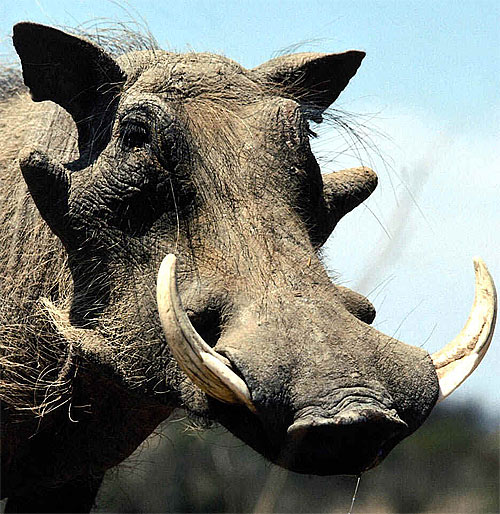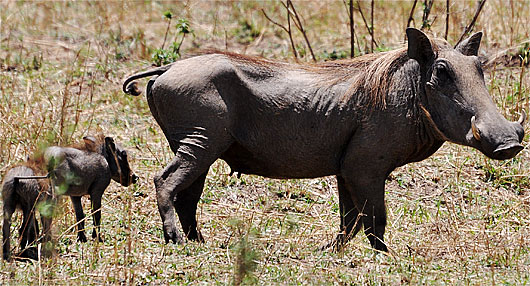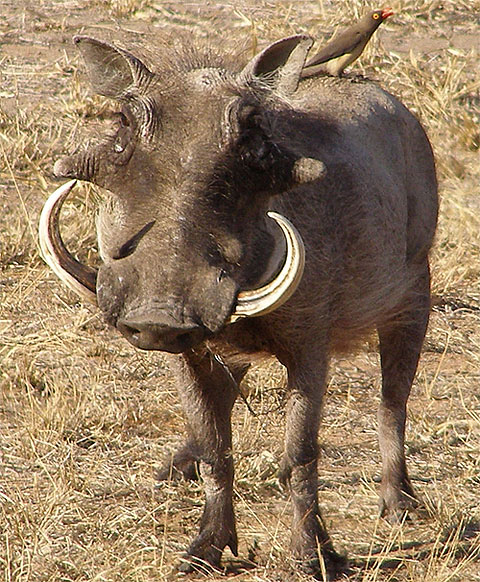Warthog – Yup, It’s Ugly but a Clever Survivor

Named for the two large, wart-like protuberances on the sides of it’s head, the warthog is native to the savannas and treeless open plains of Burkina Faso, Ivory Coast, Democratic Republic of the Congo, Ethiopia, Ghana, Guinea-Bissau, Chad, Mauritania, Nigeria, Senegal, Sudan Eritrea, Djibouti, Somalia, Kenya, Tanzania, Botswana, Namibia, South Africa, and Zimbabwe. It stands between 3.5 and 4.5 ft (1.1 to 1.4 m), and weighs between 110 and 170 lbs (50 to 75 kg). The warthog is known for it large tusks, which are actually extended canine teeth used for battle over mates, foraging, and marking. It’s also known for the mane of bristley hair that runs down it’s head and spine (it’s known to resemble a mohawk).

Warthogs are referred to as “boars” when male, and “sows” when female; and will tend to live in family groups known as “sounders” within territories that contain multiple families. These territories will usually be near water, so that the warthogs have a place to drink and wallow. They also like to be near some form of shelter, most likely an aardvark burrow, or a pile of rocks with a hole in it so that they can rest during hot days and sleep at night.

Warthogs graze on short grass for the most part, but will also eat fruit, and in desperate times, will use their tusks to uproot bulbs, tubers, and roots. They’ve occasionally been observed eating small animals and feeding on carrion when available. As previously mentioned, they are very capable of defending themselves, and when forced to (like when a sow must defend her piglets from attack), they can outright gore a predator to death. However, when confronted with lions, leopards, crocodiles, hyenas, or cheetahs, they will just flee using their tremendous speed. Perhaps the best friend of the warthog is the banded mongoose, who will groom them and remove ticks for them.
The diverse, creative warthog is a great addition to it’s ecosystem.
